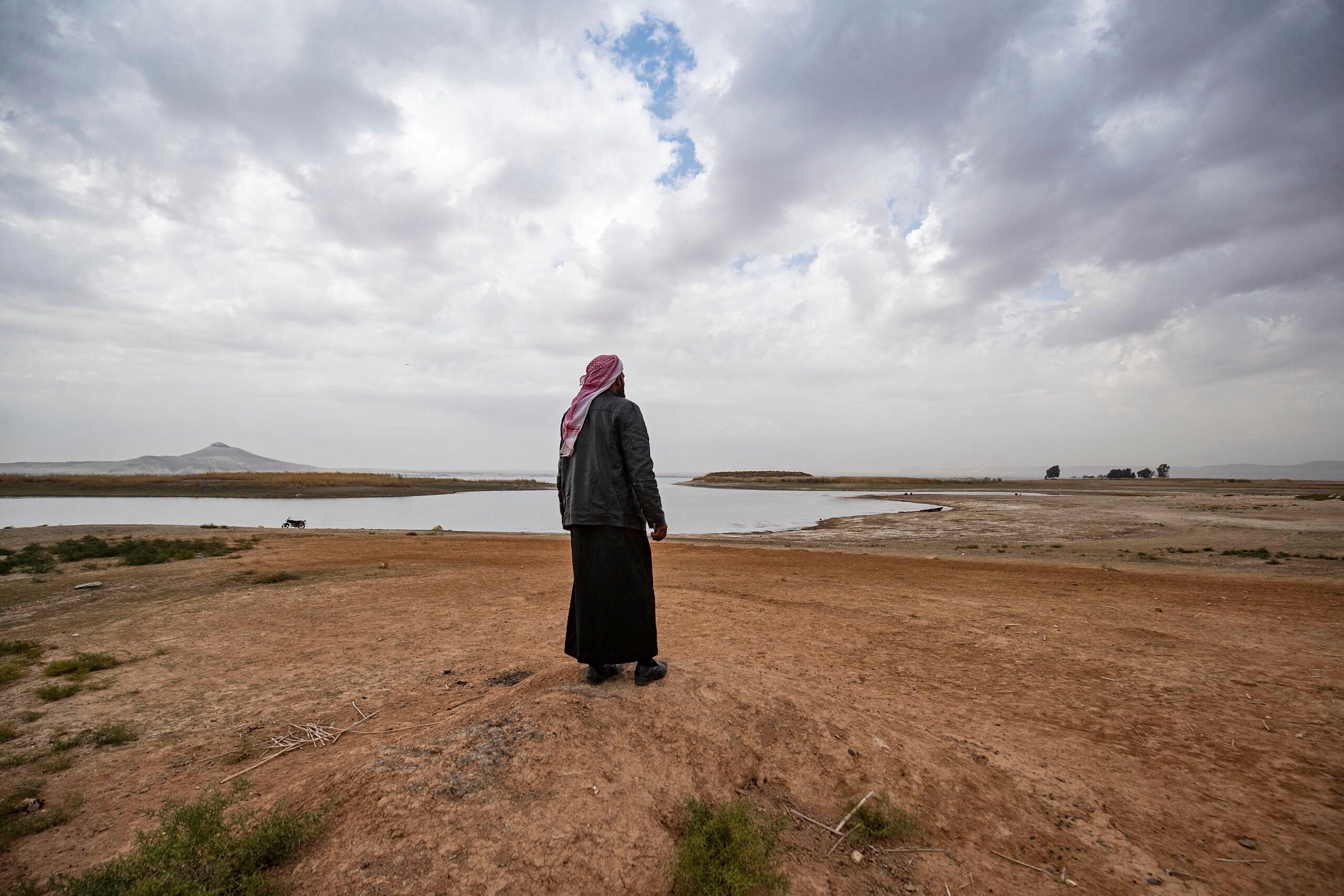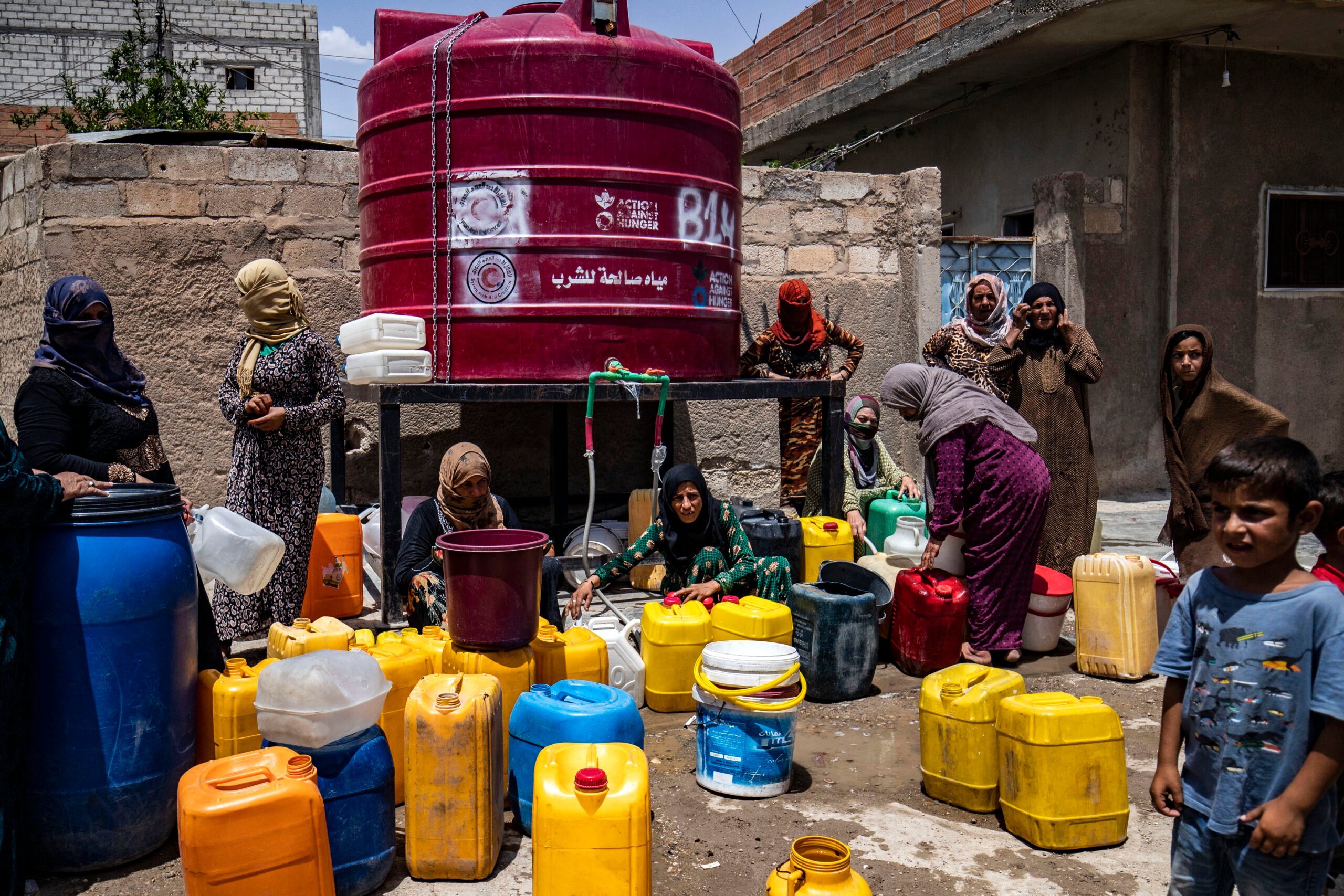
Author: Nino Orto
Climate change and unpredictable weather patterns have exacerbated Syria’s existing water shortages, with devastating consequences. The infrastructure that once provided essential water, sanitation and hygiene (WASH) services has been severely damaged or destroyed in the ongoing conflict. In addition, a growing economic crisis is making water unaffordable for many people.
The United Nations (UN) has warned that droughts will get longer and more severe around the Mediterranean, while the Global Conflict Risk Index 2022 ranked Syria as the most drought-prone country in the Mediterranean. Climate change is putting an enormous strain on water reservoirs and rivers. Access to drinking water is becoming a challenge for millions of Syrians. Thus, the humanitarian crisis resulting from over ten years of war, along with the geopolitical lines drawn by local and regional players, make it impossible to develop an effective water supply network. In this volatile context, what does the future hold for water in Syria?
Syria’s water situation
Syria’s main freshwater resource is the Euphrates, one of the most iconic rivers in the Middle East and, along with the Tigris, one of the biggest rivers in Western Asia. Originating in Turkey, the Euphrates flows through Syria and Iraq and empties into the Persian Gulf. The level of the Euphrates has dropped significantly in the last two decades. In Syria, this drop has had a direct impact on the amount of water available for drinking, agriculture and hydroelectric power plants, three vital sectors for the country.
According to USAID, previously rare severe, multiyear droughts are now two to three times more likely due to warming and drying trends. In addition, ‘river runoff is expected to decline as precipitations in the Turkish and Syrian mountains reduce, likely increasing dependence on groundwater and rainwater’.
Since 2000, overexploitation of freshwater resources, increasing water pollution and poor sanitation from wastewater discharges, along with desertification and water contamination, have contributed to the extensive environmental degradation in the country.
Various studies conducted between 2000 and 2010 suggested that in addition to climate change and recurring drought, the increase in water demand was not supported by adequate management by the Syrian government.
A year before war broke out in 2011, 98% of the people living in cities had access to safe water. This percentage was slightly lower for people living in rural communities. Today, however, only 50% of WASH infrastructures and services function properly. Intensive irrigation systems, along with inefficient techniques to avoid water waste, have played an important role in Syria’s water crisis. The situation is worsened by a high surface evaporation rate that has already caused a loss of 2.2 billion cubic metres in natural water stock.
The massive earthquake on 6 February 2023 caused widespread damage to already strained water infrastructures and had a major impact on the WASH framework.

A country torn apart by conflict and climate change
According to Christophe Martin, head of the International Committee of the Red Cross delegation in Syria, the country’s eight drinking water facilities have all been severely affected by the hostilities. Due to the intrinsic large and centralized nature of the infrastructures, they have “deteriorated over the past decade due to the lack of proper operation and maintenance, lack of spare parts and human resources.”
In areas prone to drought and under the control of the Kurdish Autonomous Administration in the north-east of the country, the Euphrates’ water flows have reduced drastically, and could soon become an existential threat for millions of people who rely upon the river.
In Raqqa’s eastern countryside, the shrinkage of Lake al-Assad has caused the reservoir’s water level to drop by six metres since 2020, putting at risk the only source of clean drinking water for more than 5 million people.
In Hassakeh, in the last two years, at least one million people have experienced reduced access to water due to continuous disruption at the Alouk water station, which is under the control of the Turkish government.
In the area controlled by the Syrian government, people lack access to piped water, relying on alternative sources such as trucked water or unsafe coping mechanisms. Meanwhile, an estimated 6.9 million people only had access to their primary water source between 2-7 days per month.
Due to contaminated water from the Euphrates, between 25 August and 26 November 2022, over 50,000 suspected cholera cases and 98 deaths were reported in Deir ez-Zur, then Raqqa and Aleppo before quickly spreading across the country. According to Médecins Sans Frontières, the continued decline of the water level in the Euphrates and the unsafe way segments of the population access water make the risk of a full-blow cholera outbreak very likely.
On 23rd March 2023, during a briefing to the UN Security Council, Tareq Talahma, acting director of the Operations and Advocacy Division of the Office for the Coordination of Humanitarian Affairs, stressed that the pressures on the Syrian population show no sign of easing “with food prices almost doubled over the past year, water supplies less certain in many areas, and insufficient livelihoods”. He added that the public health situation must be monitored.
The drop in water storage of the Tabqa, Tishreen and Baath dams on the Euphrates has also caused a decline in the agricultural production of more than 192,225 hectares of irrigated land, amounting to a loss of 80% of the harvest for local farmers. Some 2.5 million people are now severely food insecure, and child malnutrition is increasing at an unprecedented speed.
The weaponization of water
In 1987, Damascus signed a water-sharing agreement with Turkey, under which Ankara pledged to supply Syria with an annual rate of 500 cubic metres per second. However, this amount decreased by more than half following the latest drought in 2021 and the exceptionally high temperatures in the last five years.
Turkey controls more than 90% of the Euphrates’ flow and 44% of the water that enters the Tigris, giving Ankara significant leverage in its relations with Syria. Moreover, Turkish water policy has been characterized by a disregard for the population in Syria that lives downstream of the river. At the same time, Ankara has used the Euphrates as a weapon against Syrians who live in the north and east of the country, withholding the water from the river and trading it for political ends.
In October 2019, Turkey and Turkish-backed forces took control of the Allouk water station during a military offensive in north-eastern Syria. Turkey has used the water station ever since to put pressure on the Kurdish-led authorities and other regime-backed rebel groups in the area that Ankara considers as terrorist organisations and has targeted for years.
Human Rights Watch has repeatedly criticized Turkey’s role in Syria’s water crisis. ‘Turkish authorities’ failure to ensure adequate water supplies to Kurdish-held areas in Northeast Syria is compromising humanitarian agencies’ ability to prepare and protect vulnerable communities,’ the international organization said.
Damascus has also used water in recent years as a lever to achieve political goals, notably to weaken the different political players in the north of the country, which it sees as a threat to its survival.

Syria’s water outlook
More than a decade after the start of the civil war, Syria is still embroiled in political, military, economic and humanitarian crises with no end in sight. Internal and external factors have perpetuated the conflict, with none of the players involved seeming willing to alleviate the destruction and division the country is suffering.
After years of mismanagement of natural resources, structural reform is needed to address the water scarcity Syria is facing.
Unfortunately, reform of local and regional administrations in the short term, as proposed in other countries to support a swift move towards more sustainable and efficient water management, does not seem realistic considering the current situation in Syria and the involvement of more than one nation. A more feasible and beneficial solution for the region could be a water-sharing agreement between Turkey, Syria and Iraq for the Euphrates, drawn up under the rules of the UN and other international organizations.
